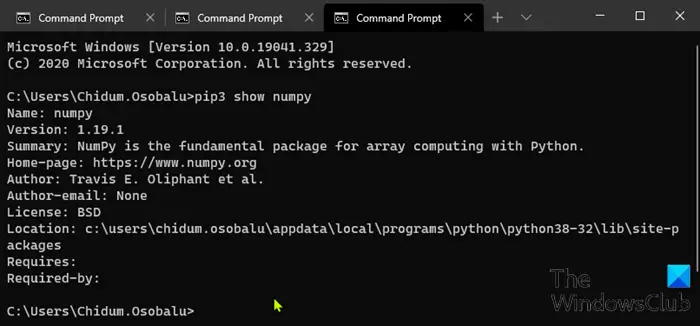
- #Install pip3 and pip how to
- #Install pip3 and pip install
- #Install pip3 and pip update
- #Install pip3 and pip manual
#Install pip3 and pip install
In an elevated PowerShell or command line with administrative access, type python get-pip.py to automatically install PIP.

If you’ve installed the most up-to-date version of Python, then you should find PIP installed alongside your Python installation. That means you’ll need to download and install Python for Windows first before you can begin to use PIP on this platform. Unlike Linux, Windows doesn’t come with Python pre-installed.

Once downloaded, type python get-pip.py to run the automatic installation script.
#Install pip3 and pip update
If you already have PIP installed, but you want to update it to the latest version, you can do that using PIP itself. Type sudo apt install python3-pip for Python 3.x installations. Once it’s installed, type pip or python -m pip (or pip3 or python3 -m pip) at the tutorial to run PIP and see a list of available PIP flags.
#Install pip3 and pip manual
First command requires you to have enabled EPEL for CentOS7 sudo yum install python34-setuptools sudo easyinstall pip If your Unix/Linux distro doesn't have it in package repos Install using the manual way detailed below.

#Install pip3 and pip how to
Here’s how to install PIP on various Linux platforms. Assuming you installed Python 3.4 from EPEL, you can install Python 3's setup tools and use it to install pip. Install a specific version of a package (often done for compatibility reasons): pip3 install smpl=0.0.4.For Python versions below 2.7.9 or 3.4, installing Python PIP on Linux will depend on the system package manager in use. You can search for packages online in the PyPI package database at : pip3 install smplĪbove, we installed the smpl graphing package. To install a package, you’ll need to know the name of the package. To see what Pip Packages are already installed on your system: pip3 list Installing Python Packages with Pip You can list out all of the available functions in Pip from the terminal: pip3 -help Listing Installed Pip Packages If it is not, you can install it by running the following in your terminal: sudo apt update If it is installed, you’ll see something like: pip 20.0.2 from /usr/lib/python3/dist-packages/pip (python 3.8) Installing Pip/Pip3

To check if pip is installed, you can check the version installed on your Ubuntu system by running the following in the terminal: pip3 -version PyPI contains a collection of other users’ code for performing a multitude of tasks, from drawing graphs to artificial intelligence. The default repository used by Pip is the Python Package Index (PyPI) ( ). Python is useful on its own, but it’s even more useful when you can start leveraging other people’s pre-written code. If you want to do it the manual way, the now-recommended method is to install using the get-pip.py. You can usually install the package for pip through your package manager if your. It’s currently at version 3 – hence, Pip3. How to install pip with Python 3 If youre running a Unix-like System. This tutorial will teach you how to install pip3, the package manager for Python, on Ubuntu Linux.


 0 kommentar(er)
0 kommentar(er)
